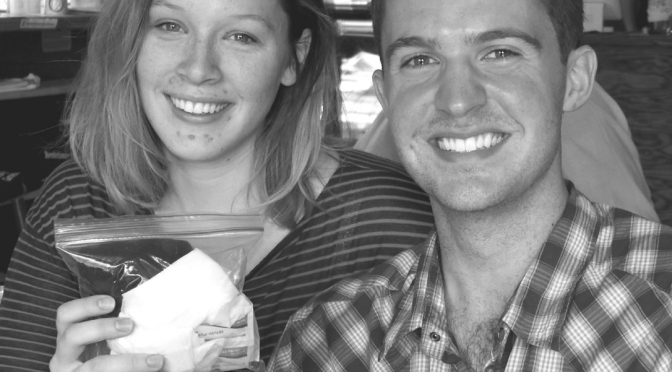This article by Denise Holley appeared in our fall newsletter.
How can we reduce the chance a person determined to cross the US border will die in the Arizona desert? Equip the crosser with a simple kit: two filters and two vials of Clorox to purify contaminated water, four packets of Vaseline, a fresh pair of socks, a whistle to call for help, and instructions in Spanish.
If a traveler rubs Vaseline on his feet, he is less likely to develop blisters and get left behind by his group, said volunteer Hannah Hafter. She and volunteer Kasha Bornstein developed the original “harm-reduction” kit in 2011.
In spring 2013, Nogales volunteer Sally Meisenhelder gave out kits in Nogales, Sonora, to migrants headed north. University of Arizona medical students assembled hundreds of kits in August 2013 and again this year, said volunteer Maureen Marx. NMD volunteers distributed the kits at crossing points along the Arizona–Sonora border.
“We fill the vials with bleach and label them. That will kill a large percentage of bacteria.”
This past summer, the kit project got a jump start when a pair of students from Whitman College in Walla Walla, Washington, landed a $10,000 grant.
Keiler Beers, Genevieve Jones and six fellow students came to the Arizona–Mexico border for a NMD alternative spring break in 2012. “We all left with a greater sense of urgency about the border,” Beers said.
He returned for a five-week internship with No More Deaths in 2013, while Jones participated in an academic program on the border, she said. As seniors, Beers and Jones approached the Davis Projects for Peace foundation with a proposal: “Peace Through Preservation of Life: Harm Reduction on the U.S.-Mexico Border.” They won the funding and returned to southern Arizona in June 2014.
First, the students gathered leftover kit supplies and did an inventory, Beers said.

Then they researched inexpensive ways to purify water that could be used in the desert.
“We fill the vials with bleach and label them,” Jones said. “That will kill a large percentage of bacteria.”
The thirsty person must also use the filter cloth. When Hafter gives out the kits, she emphasizes that it takes thirty minutes for the water to become safe to drink.
The students bought large quantities of kit supplies online, Beers said. With socks at fifty cents a pair, they kept the cost per kit to $1.07. Then they packed hundreds of kits into crates and distributed them to migrants in Altar, Nogales and Agua Prieta. They included a booklet they wrote that described how to make more kits.
In Altar, the students spoke with a man who used a kit before he was deported, Beers said. “He didn’t get sick at all even though he drank from a dirty stream. It’s important to do preventive work and not just after-the-fact care.”
They left two crates with Marx, one with a Nogales volunteer,
and one with the search and rescue coordinator.
“For both of us, it was a lesson in providing tangible help,” Jones said.

